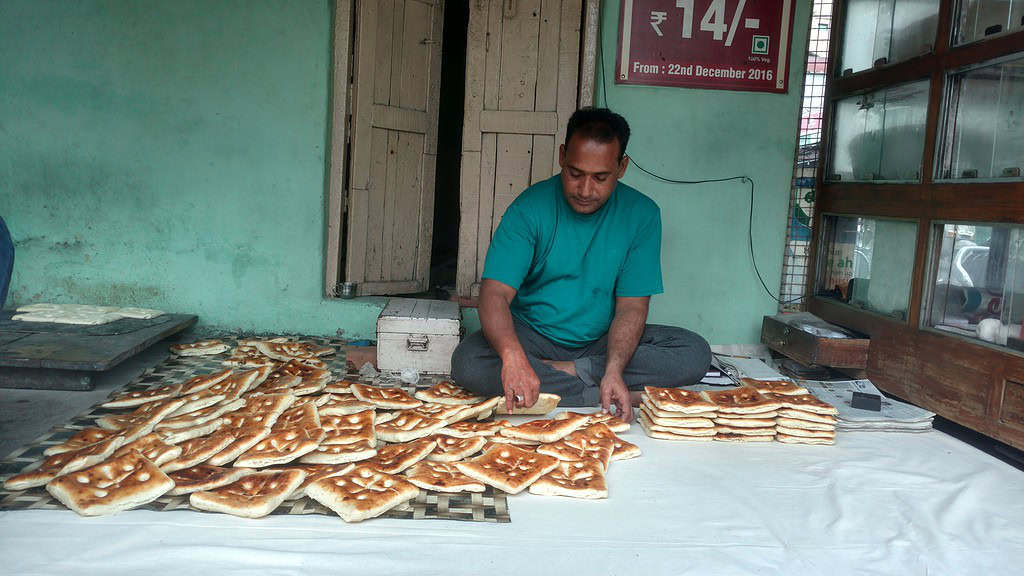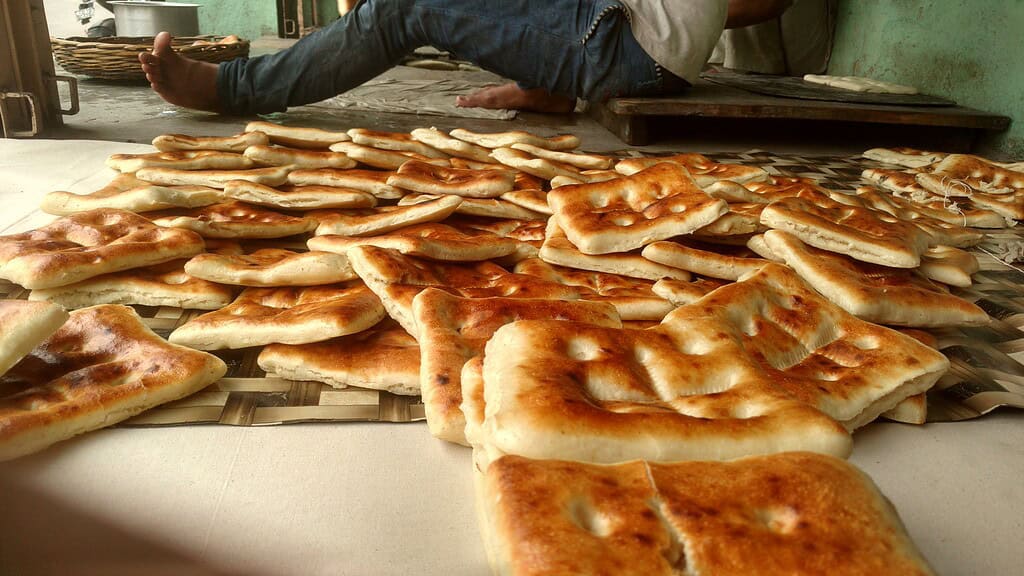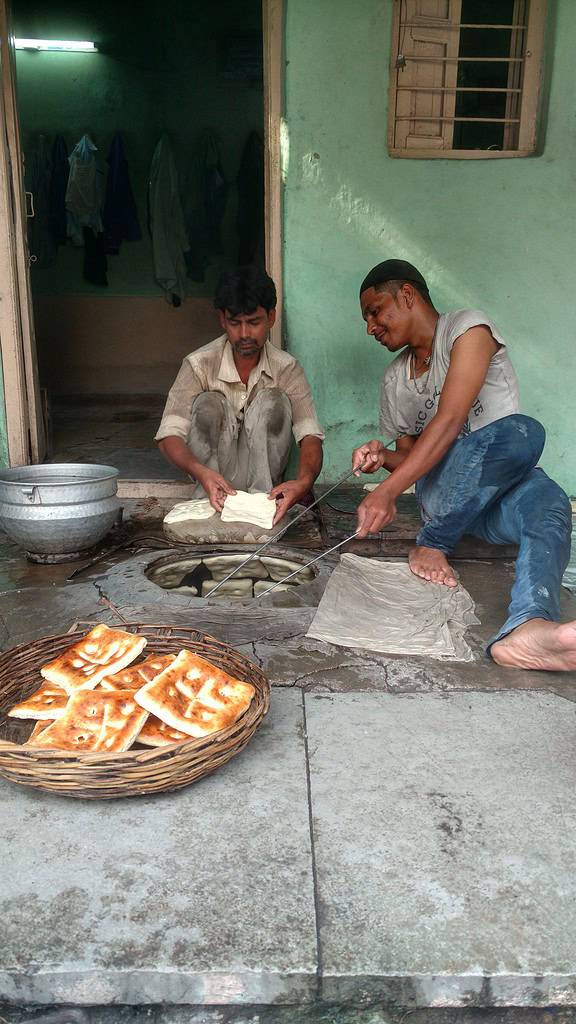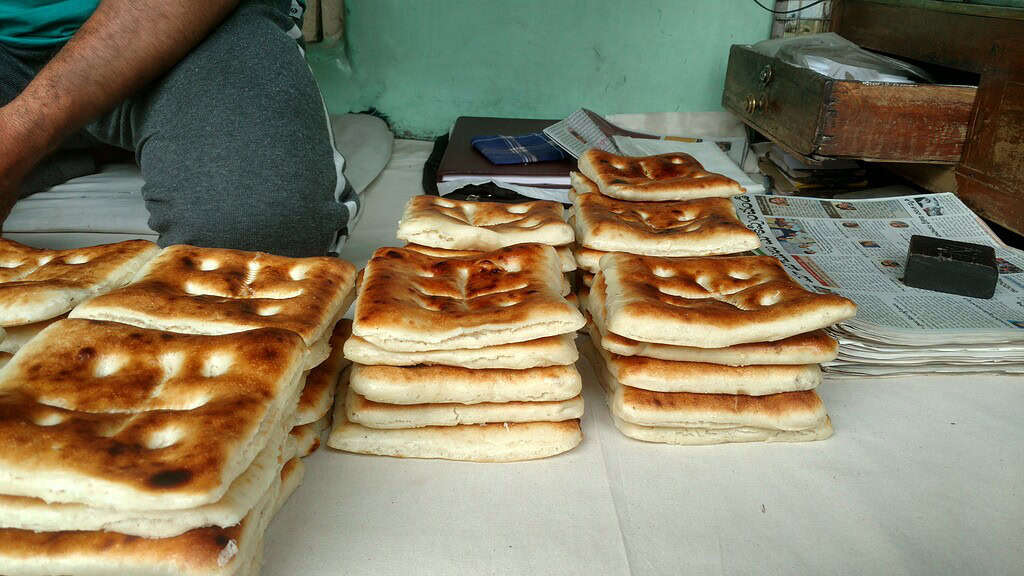One of the best things I love about Hyderabad (among several others) is its continuity as a city; the reminder that history or our heritage is not just about old buildings and monuments, but also about people, their stories, books, culture and a lot of other things. And the story of Munshi Naan, a 167-year-old establishment, represents that perfectly.
It is actually heartening and amazing that a square piece of naan, which is an integral part of Hyderabadi cuisine, has continued to be a part of our city’s history for over a century-and-a-half.
The story of how Munshi Naan has been in existence since 1851 is a fine example of the city’s continuity which captures the very essence of Hyderabad. The shop dates back to the reign of the fourth Nizam (which stands for governor and not king) of Hyderabad, Naseer-ud-Dowla, who ruled the erstwhile state of Hyderabad from 1829 to 1857 (to put things in perspective, that period wasn’t exactly glorious).
However, in a big blow to the city’s heritage, the 173-year-old Munshi Naan outlet will be demolished in the coming days to pave way for the Hyderabad Metro Rail’s extension into the Old City area. The historic naan shop has been baking bread in its traditional tandoor from its inception till date. Its owners are reportedly looking for an alternate location in the area and will shift once a new spot is identified.

History of Munshi Naan
Mohammed Hussain, who worked as a Munshi, (clerk) in the office of the monarch, learnt the recipe (from Delhi apparently) to make naan, and hence started his own establishment in 1851. It was named after his profession, hence Munshi Naan. Today, his great grandson, Abdul Hameed runs the place, with the same unchanged recipe. Only the shape of the naan has changed over the years.
“The shapes of naan in those days were round or oval. Now you have the heart shape, or even paan-leaf shaped naans. You see these dots? We have to make small holes as the naan needs some air-flow inside so that the surface doesn’t get burnt while baking it,” explained Mr. Hameed, showing me a piece of the bread, which has an orange surface as jaggery is applied on top before putting it inside the Bhatti (basically a big dekchi or a flat bottomed cooking pot built inside a mud oven).
The jaggery, which prevents the surface from getting burnt, also gives the naan a slightly sweet taste. Situated on the main road (on the left) while going towards Purani Haveli from Darul-ul-Shifa, Munshi Naan clearly makes its bread quite differently. It is definitely worth a try in case you haven’t tried it.

“The recipe or the method used at Munshi Naan has been passed on from generation to generation, successfully, with almost no changes,” Mr. Hameed told me when I met him one early morning in April. Only his shop’s structure has changed; the current place is half of its original size, as the front portion was lost to road-widening years ago by the city’s civic authorities.
“There were no roads here before, and if you see behind the building, there is an old door, which was actually the entrance to this area (FYI: will explore this aspect later in subsequent stories),” explained Mr. Hameed. He added that his shop was originally made of limestone mortar (which was standard back then) and had a wooden roof.
It however had to pave way for the current building as there was structural weakness and damage to the original building.
Why the naan at Munshi Naan is special:
Machines have made a lot of our work easy today, and the same goes for bakeries. But the distinct flavor that Munshi Naan retains is because it relies on human skills and the old “formula” passed on to Mr. Hameed from his forefather. So how exactly is the naan at his shop different?
“These days everything is readymade. You just need to mix yeast, edible oil and salt with all purpose flour (maida) and put it in a machine to make naan. The process takes about half an hour after which you can prepare the bread. But we don’t use yeast, but actually mix curd and maida (and other ingredients of course), and hang the mixture in a cloth overnight, which we use the next morning. The quantity of it depends on orders,” explained Mr. Hameed.
He said that the process is similar to what is generally used in other bakeries, but just that Munshi Naan cannot make naan instantly like other bakeries (as the dough is prepared in limited quantity daily). The dough, once ready, is then baked to perfection on the Bhatti in batches. “Once our mixture is over, we can’t make any more for the day, unlike in modern ready-made naan making machines,” added Mr. Hameed.

But there was a time when Mr. Hameed did try to modernize his trade. A company was paid to make a “fridge-type” machine to bake naan, and an attempt was made to use it. But it was futile. “Usme who baat nai thi lekin (It was not the same),” Mr. Hameed laughed, when I asked him about the failed experiment.
The naan became hard if they would leave it in the machine for a little longer. “It was something we tried working on but it failed. We thought it would help us reduce labour work too. So we left it there, and we understood that this naan can be made only with direct heat like this (see picture for reference),” said the owner, who sits at Munshi Naan every day from 7 a.m. till noon (the shop is open till about 9.30 p.m. daily).
Before closing, the workers prepare the mixture every night and a few ingredients (apart from the basics as mentioned earlier) of the naan also change from season to season (since they don’t use yeast. “We have to make some of the ingredients on our own (which he can’t tell of course, because, secret),” Mr. Hameed told me.
